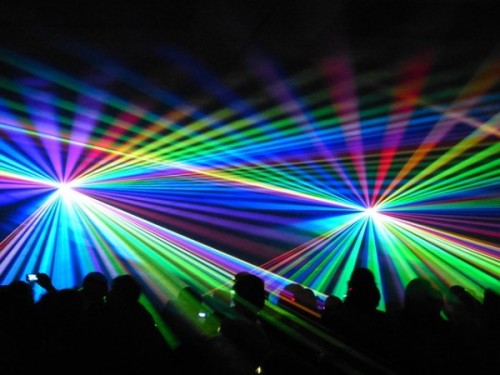With so many options when it comes to laser marking systems, it is not only important to do your research about potential companies but also research the options with respect to the equipment you are considering purchasing. It is important to pair your needs with a tool that will benefit rather than challenge what you need it for.
With respect to laser marking technology, there are two different types that I would like to take some time to explore. CO2 and Fiber Laser Technology—which one is right for you?
Laser technology
First, let us try to understand what we are referring to when we are speaking of laser technology. Laser originated as an acronym which refers to “light amplification by the stimulated emission of radiation”. The light beam produced by most lasers is a fine pencil size, and it can maintain its size, direction and strength over large distances, sharply focusing for a wide variety of uses and applications.
Lasers have applications across the board, including consumer devices such as optical disk drives, laser printers and barcode scanners. They are used in the medical world for laser surgeries and skin treatments, and are used in the industrial field for cutting and welding materials. They mark targets for speed and range in military and law enforcement, and are used to create light shows in the entertainment industry.
What are my needs?
First and foremost, before even looking at the specific marking systems, including what they can offer and where they are lacking, you must first realize what you need the system for. What are you marking? What is the majority of your business focused on? Do you require this on a daily basis or less often? Do you need speed over finesse? Endurance? Low maintenance? Create a list of what you need, what you would like, and what would be ideal in a perfect world.
Start with your budget and determine where on the spectrum of like vs need this purchase sits. A careful and comprehensive analysis must examine not only the cutting equipment itself, but also the impact the new equipment will have on other existing fabrication processes.
What will I be marking?
Depending on what the majority of the items you wish to mark are made out of, you will be guided towards one style of machine more than another:
C02 laser marking systems
It may be better for you if you are expecting to be marking non-metal based materials. These laser systems are more widely used in clothing, leather, craft gifts, packaging, advertising, wood processing, tools and electronics, etc.
Fiber Laser marking
It would be more ideal for those with a variety of metal materials, such as iron, steel, brass, PVC pipes, rubber, coating material, epoxy resin, automobile parts, electronic parts, jewelry and keys, knives, instruments, etc.
Once you have determined the material you will be working with, you will have a ballpark to play in. You can look more closely at the specifics.
What’s so unique about CO2 lasers?
CO2 lasers have been and continue to be the most widely used and broadly sold cutting systems on the market. Through ongoing, efficient research and development, the CO2 lasers have been able to build a strong reputation with steadily advancing enhancements. One of the most notable differences is the cost.
New resonators have made CO2 lasers more economical to operate, and has increased their processing speed as well—they are up to 80% faster at piercing through materials. New technology has also made these machines much more maintenance-free than in the past. For those who are looking to save money and be more eco-conscious, the new CO2 laser systems are also able to shift into power-saving modes to reduce energy consumption by as much as 80% when idling.
How do fiber lasers compare?
Fiber laser marking systems support excellent precision-marking performance, giving you both precision and speed. Whereas CO2 lasers have many applications outside of metals, the Fiber laser is more specialized and ideal for working with metal materials such as the iron, steel, and brass in automobile parts, instruments, etc.
The most common industrial applications for this type of equipment include large metal working industries, such as automobiles, metal processing, welding shops, etc. Fiber lasers will outperform CO2 in the thin material range below 1/8 in thick; however CO2 lasers will outperform fiber in the thicker material ranges above ¼ in. As noted above, Fiber can cut copper, brass and aluminum much better and more safely than CO2 because the beam is more readily absorbed and not reflected.
If cost is a significant factor in your decision, fiber laser operating costs are typically half of what a CO2 system can offer due to the lower electrical consumption and high electrical efficiency of fiber lasers. This gap is closing quickly; both CO2 lasers and fiber lasers have seen similar technological advances when it comes to energy efficiency and productivity.
This article was written by Greg. S. Alberto, who has more than 10 years of experience in marking industry that helps to facilitate his clients for making their brand known in industry.



